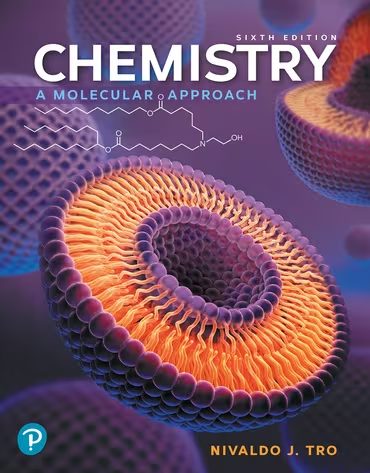Write an equation for the formation of each compound from its elements in their standard states, and find ΔH °f for each in Appendix IIB. a. NH3(g)

Write an equation for the formation of each compound from its elements in their standard states, and find ΔH°rxn for each in Appendix IIB. d. CH3OH(l)
 Verified step by step guidance
Verified step by step guidance
Verified video answer for a similar problem:
Key Concepts
Standard State

Formation Reaction

Enthalpy Change (ΔH°rxn)

Write an equation for the formation of each compound from its elements in their standard states, and find ΔH°rxn for each in Appendix IIB. a. NO2(g)
Write an equation for the formation of each compound from its elements in their standard states, and find ΔH°rxn for each in Appendix IIB. b. MgCO3(s)
Hydrazine (N2H4) is a fuel used by some spacecraft. It is normally oxidized by N2O4 according to the equation: N2H4 (l) + N2O4 (g) → 2 N2O (g) + 2 H2O (g) Calculate ΔH°rxn for this reaction using standard enthalpies of formation.
Pentane (C5H12) is a component of gasoline that burns according to the following balanced equation: C5H12(l) + 8 O2(g) → 5 CO2(g) + 6 H2O(g) Calculate ΔH°rxn for this reaction using standard enthalpies of formation. (The standard enthalpy of formation of liquid pentane is –146.8 kJ/mol.)
